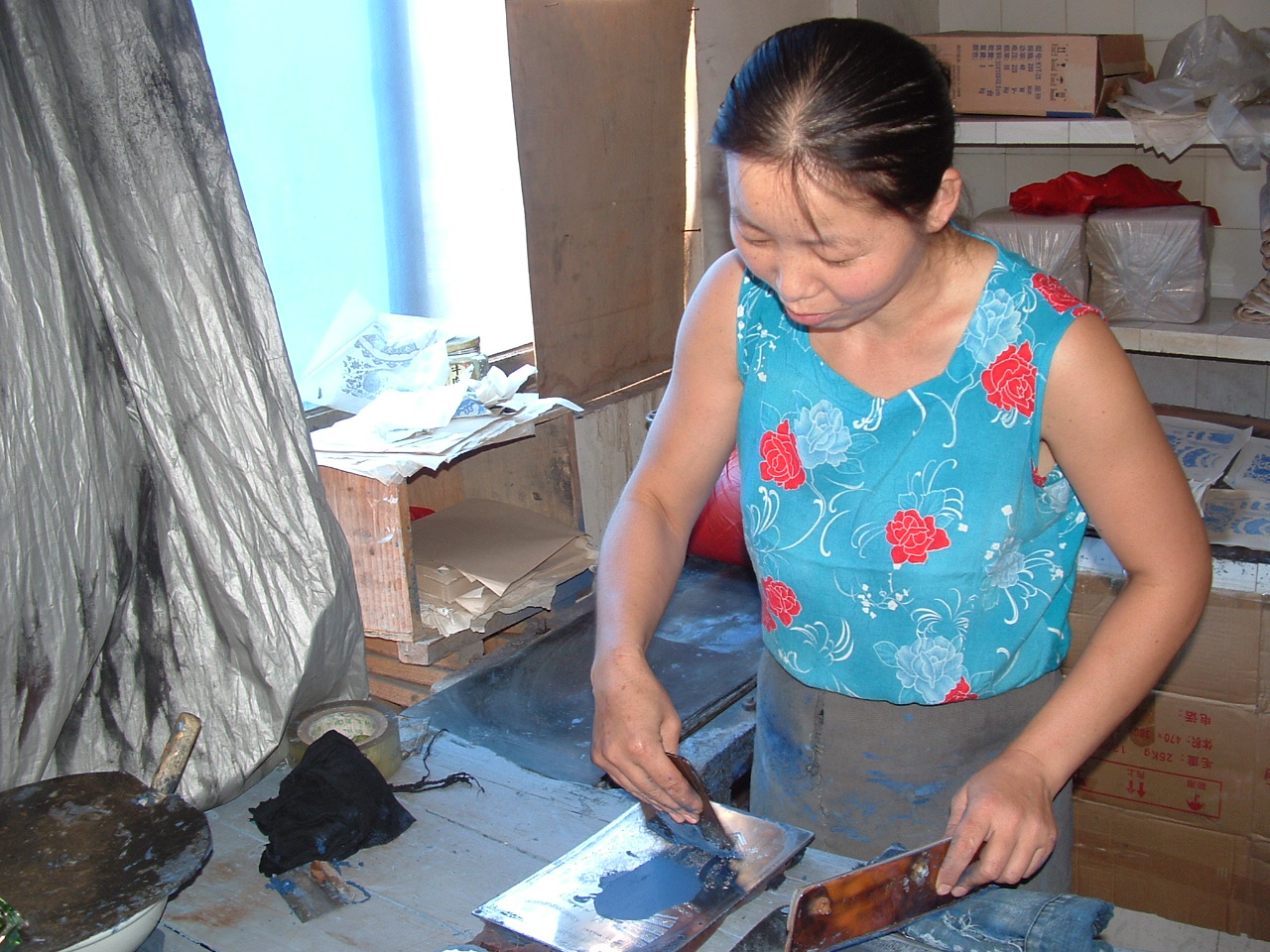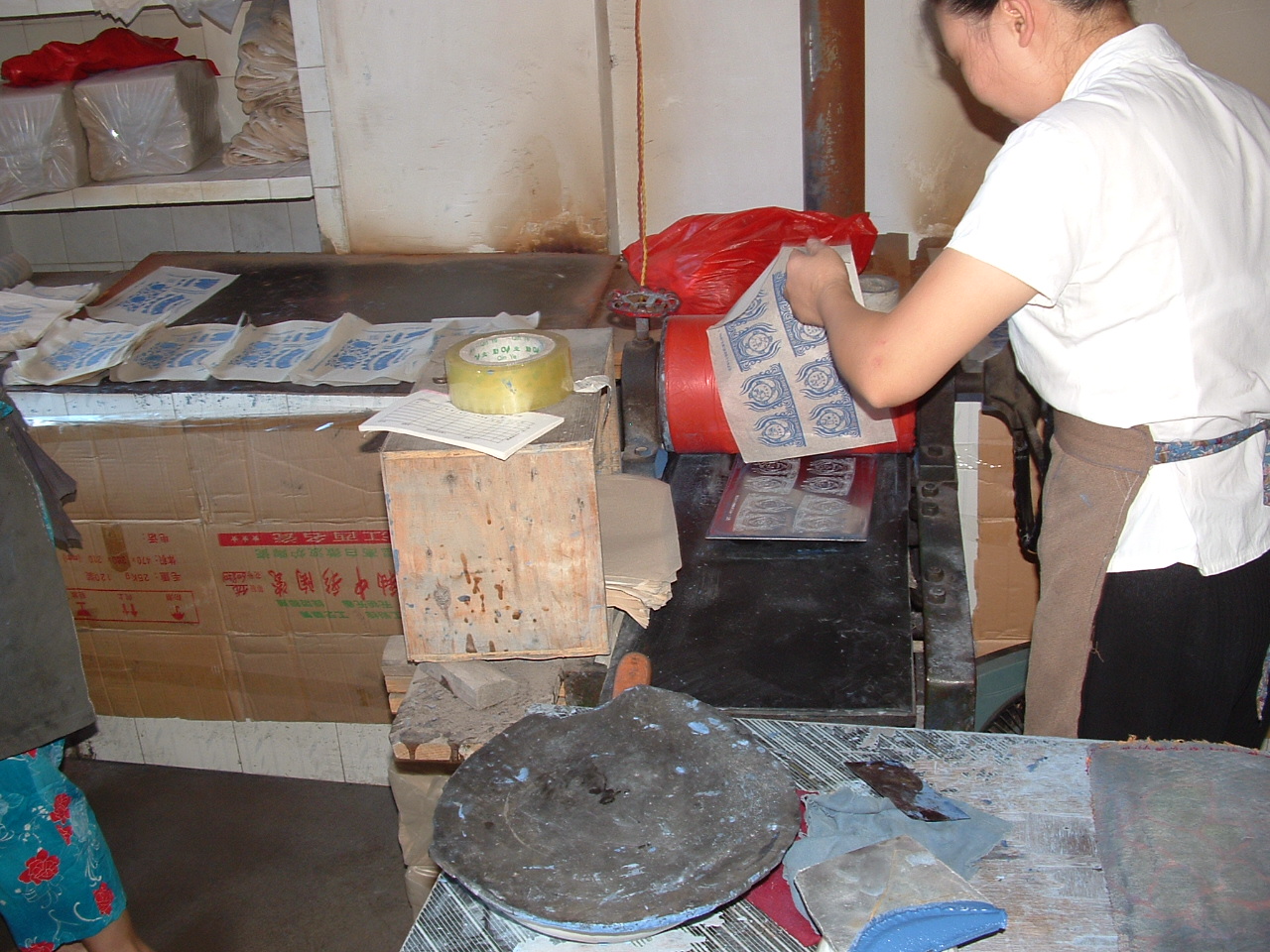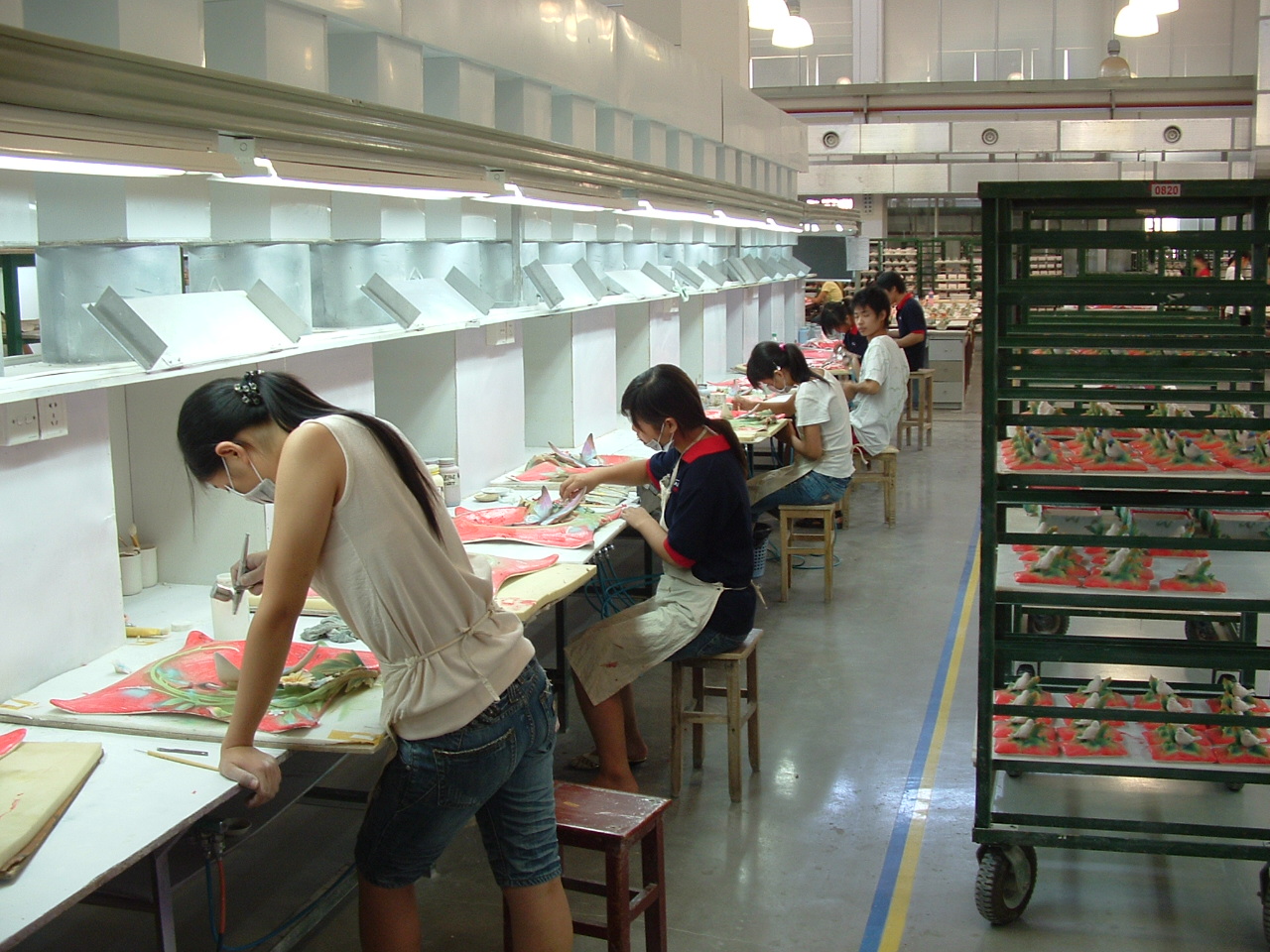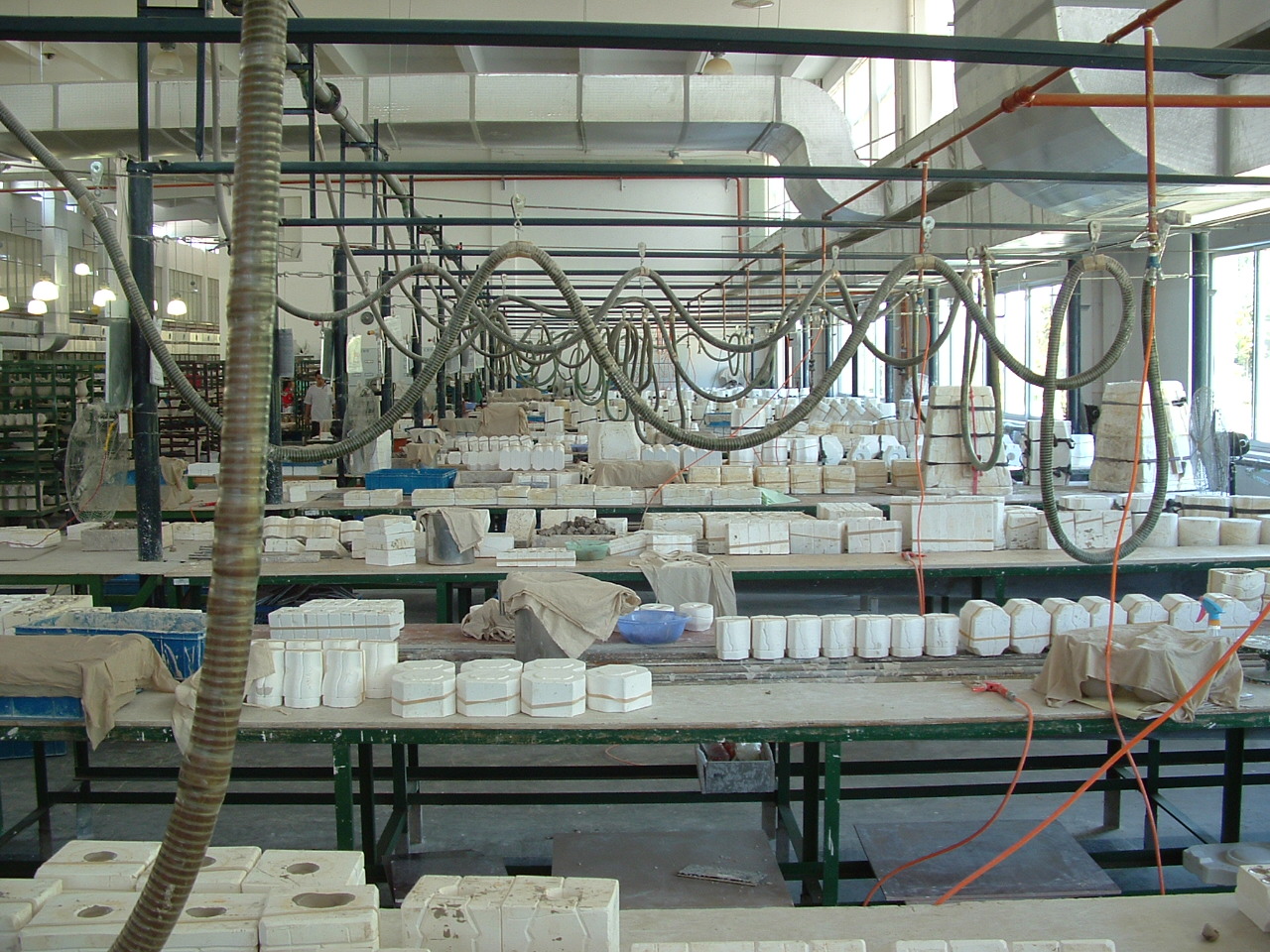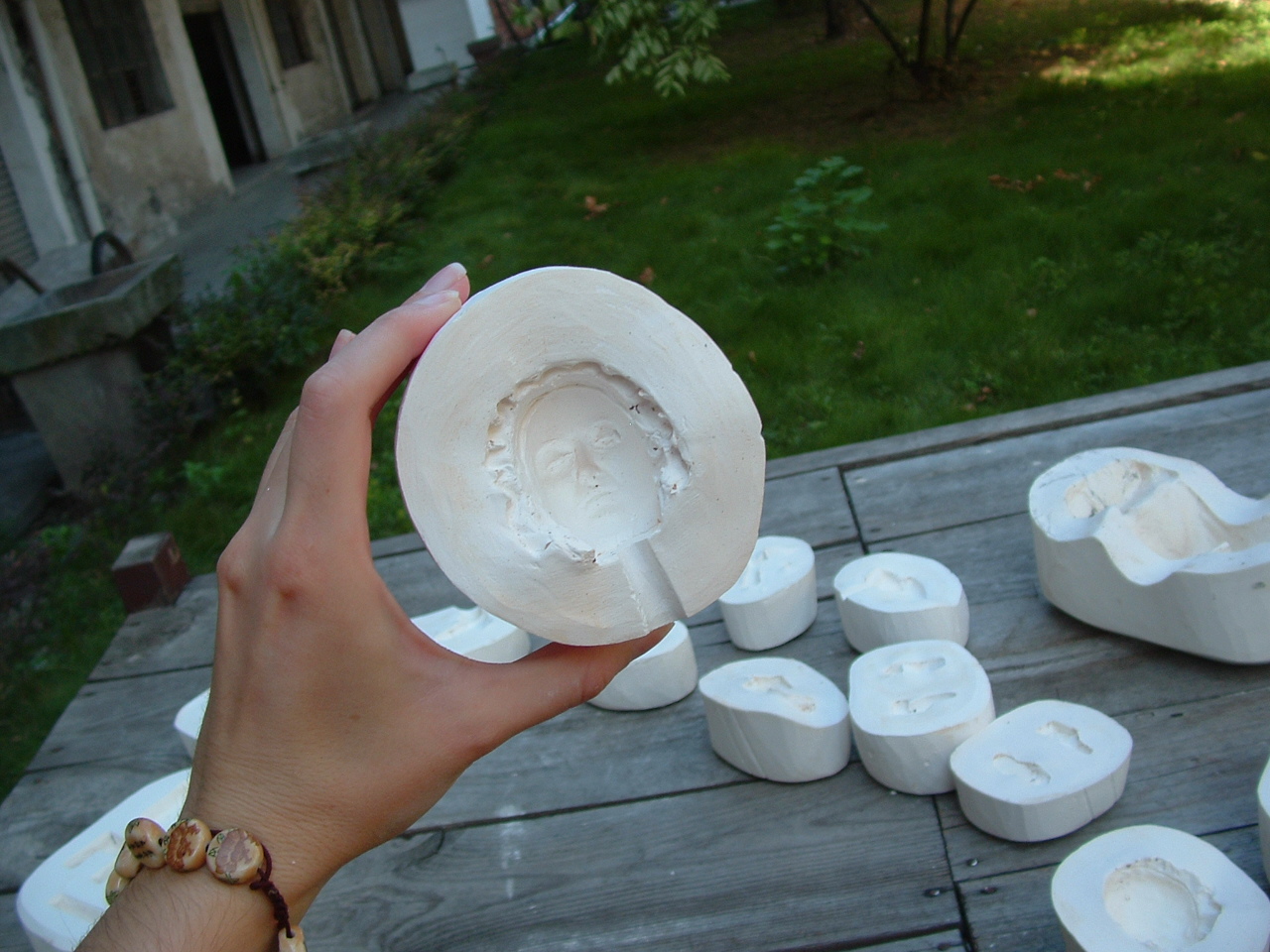My BFA thesis work, a few pieces of which are shown above, was made during the 2004 election. In grad school I continued making what I refer to as 3D political cartoons, but my understanding of politics changed as I continued my independent study. I began to see national politics and foreign policy as a dog and pony show that hinted at, but mostly disguised the economic forces behind the rhetoric.
I went on to graduate school at Arizona State University, where an annual competitive travel scholarship gave me an idea. I wanted to study outsourcing by going to China, the global poster child of cheap labor, and studying the process first hand.
My piece with a Star Trek style time-travel historical intervention against George W., to ostensibily go back in time and prevent the Iraq War, won me the cost of a flight to Shanghai through the ASU’s Nathan Cummings Foundation Fellowship .
I set out in the summer of 2007 without any real idea of how or where I would have my work made, but I was relatively confident I’d figure it out while I was there.
An old Hutong-style roadway in Shanghai, contrasting with high-rise apartments towering behind.
Being in China of course complicated my idea of “the sweatshop.” China is an essay of contrasts, as I imagine transitioning third world countries tend to be, especially when going through an industrial, economic and tech revolution. I saw a lady casually washing bok choy in the stream behind the restaurant where they were to be prepared. I saw a new Walmart emerging from a rickety bamboo scaffold. A stone’s throw away, trendy boys hawked haircuts in the market where you could still buy all the goods you might find in Walmart, but from independent shops.
I got the feeling the country was having a hard time catching up with itself, and it was obviously being descended upon to do the work of the entire globe. The airports swarmed with international businessmen. I spent my 12 hour flight speaking bad Spanish with a man who was importing Chinese garlic to the Dominican Republic. His business partner was having serious prostate trouble, and I had to translate for him to the Chinese staff so they could contact an ambulance for their arrival in Shanghai.
The one bona-fide stereotypical sweatshop I visited manufactured glaze decals. It was on the 4th floor of a poorly ventilated building, and on a 103 degree afternoon the smell of organic solvents was distracting. The workers were all women who earned 1 yuan for every 1,000 decals they printed. (3 yuan would buy you a cheap soda) They worked from 7:30 in the morning until 6, and on a good day they could print 10,000. They said the work “got [them] out of the house.”
In contrast I also visited the Franz factory, a clean, modern Taiwanese factory full of young workers from other provinces and districts, who worked 6 days a week and lived in dorms on the premises.
I was surprised to find that again, all the work was handmade and cast from slip molds— no injection molds or machines. People were cheaper than machines. Locals who wanted the work said begrudgingly that the company didn’t like to hire people from Jingdezhen because they’re too “country.” Importing labor from other areas was standard practice in Chinese factories.
My grad school colleagues told me to book at stay at an artists’ residency in the middle of an old factory district of Jingdezhen— my destination, the city where porcelain originated. The city is somewhat economically depressed; its major industry is now helicopter manufacturing, a fact I learned from another conversation on the flight to Jingdezhen.
At the residency I finished work on my self portrait textile worker. I thought of it as a way to pay homage to the western industrial revolution, while simultaneously “over-identifying” with the plight of the archetypal garment laborer.
After asking around for a week or so, one of the translators who worked for the artist residency offered to give me an estimate to have the figurines produced and shipped. We agreed to terms, hand-wrote a contract on a little slip of paper and I paid she and her husband half, to start production.
While I was there the master mold maker “shifu” made the first mold from which the production molds would be cast. Another man cast and assembled all 600 figures from an 11 piece press mold. Then another family fired the pieces, another applied the decal seal and another assembled the crates for shipping. The second half of the transaction occurred entirely across the internet, through e-mails and wire transfers.
A photo I took after unpacking most of the 600 figurines in order to apply Made in China stickers in English. I didn't know at the time that it was legally required to have country of origin stickers applied in the language of the destination country-- they were labeled in Chinese, already. Two agents from the Department of Homeland Security had to come and inspect them to make sure they weren't tiny mules smuggling contraband. Since I obviously didn't know what I was doing the agents were sympathetic and gave me a handbook on how to do it properly "the next time."
My 2008 graduate thesis show, entitled Other Small Matters of Import, was divided into sections:
A storage area housed the crates, packing materials and a sleeping space behind a Chinese screen. I wanted to show the crates and the raw materials involved in the shipping.
A “sales” area, where I maneuvered my car into the gallery and sold individual sets of the figurines out of the trunk in a sort of pseudo-performance.
An installation of the figures themselves, entitled “Over-Identification of the Other” miming sewing a large silk textile in a giant cardboard box full of packing peanuts.
An office wherein I showed the receipts and physical documentation of the process of importing, as well as videos from China, and my “bibliography” library.
Finally, the second conceptual half of the show, a pastiche of Pieter Brueghel’s Landscape with the Fall of Icarus. I built an allegorical diorama using the Breughel painting as a formal and conceptual framework. I wanted to talk about Panama and the canal, as another focal point of globalization, and another site of disastrous US foreign policy. I chose the Brueghel piece, as it depicts (with just the splash in the corner of the painting) something astounding and tragic happening, while the rest of the world unknowingly goes about its business.
My main inspiration for the piece came from an illustration I came across in my research: plans from Lawrence Livermore Laboratory to excavate a sea-level canal through Panama. My source was a book by John Lindsay-Poland, entitled Emperors in the Jungle. The U.S. government was planning to use 275 nuclear detonations the size of the bomb that was dropped on Hiroshima to dig the trench. They would simply relocate the 40,000 indigenous Kuna people who lived nearby. This idea was spearheaded during the Eisenhower administration as part of a campaign called Operation Ploughshare, or Atoms for Peace— which strove to “harness the atom” for “peaceful” purposes.
The plan wasn’t entirely shelved until the Nixon administration.
I depicted the cast of characters notoriously involved in Panamanian foreign policy, in place of characters in the Brueghel painting. Eisenhower is the plowman without a plow. Reagan is the Shepherd. Carter is the helpless, concerned onlooker. Noriega and H.W. Bush are spectators from an island in the distance. Clinton falls asleep sunning himself while reading a copy of N.A.F.T.A.
And last but not least, the plane carrying Omar Torrijos, the populist dictator of Panama who dared to work with Carter to sign a treaty returning the canal to the Panamanians in 1999, plummets to the earth in a fiery plane crash.














